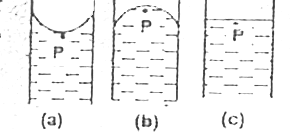Compare the basic features of the three types of worms.
To compare the basic features of the three types of worms—flatworms, roundworms, and segmented worms—let's break down their characteristics step by step.
Step 1: Identify the Types of Worms
The three main types of worms are:
1. Flatworms
2. Roundworms
3. Segmented worms
Step 2: Flatworms
- Phylum: Platyhelminthes
- Body Structure: Flat and soft, resembling jelly.
- Digestive System: Typically have a simple digestive system; some may not have a digestive tract at all.
- Body Plan: Bilateral symmetry.
Step 3: Roundworms
- Phylum: Nematoda
- Body Structure: Cylindrical and elongated.
- Digestive System: Tube-like digestive system with two openings (mouth and anus), allowing for a more complex digestive process.
- Body Plan: Also exhibits bilateral symmetry.
Step 4: Segmented Worms
- Phylum: Annelida
- Body Structure: Segmented body, which is divided into multiple sections or segments.
- Digestive System: More advanced, with a complete digestive tract.
- Circulatory System: Closed circulatory system, where blood is contained within vessels.
Step 5: Summary of Comparison
- Flatworms: Soft, flat body; simple or absent digestive system; belong to Platyhelminthes.
- Roundworms: Cylindrical body; tube-like digestive system with mouth and anus; belong to Nematoda.
- Segmented Worms: Segmented body; complete digestive system; closed circulatory system; belong to Annelida.
Conclusion
Each type of worm has distinct features that differentiate them from one another, including their body shape, digestive systems, and phyla classifications.
---
The three main types of worms are:
1. Flatworms
2. Roundworms
3. Segmented worms
- Phylum: Platyhelminthes
- Body Structure: Flat and soft, resembling jelly.
- Digestive System: Typically have a simple digestive system; some may not have a digestive tract at all.
- Body Plan: Bilateral symmetry.
- Phylum: Nematoda
- Body Structure: Cylindrical and elongated.
- Digestive System: Tube-like digestive system with two openings (mouth and anus), allowing for a more complex digestive process.
- Body Plan: Also exhibits bilateral symmetry.
- Phylum: Annelida
- Body Structure: Segmented body, which is divided into multiple sections or segments.
- Digestive System: More advanced, with a complete digestive tract.
- Circulatory System: Closed circulatory system, where blood is contained within vessels.
- Flatworms: Soft, flat body; simple or absent digestive system; belong to Platyhelminthes.
- Roundworms: Cylindrical body; tube-like digestive system with mouth and anus; belong to Nematoda.
- Segmented Worms: Segmented body; complete digestive system; closed circulatory system; belong to Annelida.
Each type of worm has distinct features that differentiate them from one another, including their body shape, digestive systems, and phyla classifications.
Topper's Solved these Questions
- KINGDOM CLASSIFICATION IIBOOK - ICSECHAPTER - KINGDOM CLASSIFICATION IIEXERCISE - EXERCISES (SECTION II (SHORT ANSWER QUESTIONS))
5 Videos
- KINGDOM CLASSIFICATION IBOOK - ICSECHAPTER - KINGDOM CLASSIFICATION IEXERCISE - EXERCISES (SECTION II (LONG ANSWER QUESTIONS))
8 Videos
- MODEL TEST PAPER IBOOK - ICSECHAPTER - MODEL TEST PAPER IEXERCISE - SECTION II (GIVE THE BIOLOGICAL TERM FOR THE FOLLOWING)
9 Videos
Similar Questions
Knowledge Check

Compare basic strengths of the above compounds:AA>B>CBB>A>CCC>A>BDC>B>A
Name the three types of plastids.
View SolutionGiven the basic features of the mechanism of inheritance.
View SolutionCompare the basic strengths of ortho, meta and para isomers of nitroaniline and predict the decreasing order of basicity
View SolutionThree types of mucles are
View SolutionCompare the basic strength of the following compound:

View SolutionCompare the pressure at the point P in the three tubes shown in the figure .

View SolutionGlow worm is
View Solution
